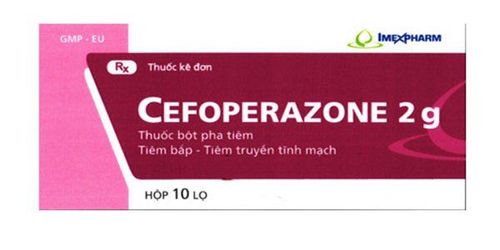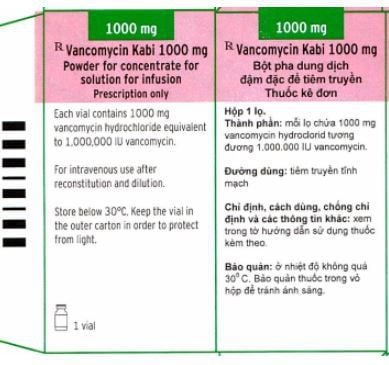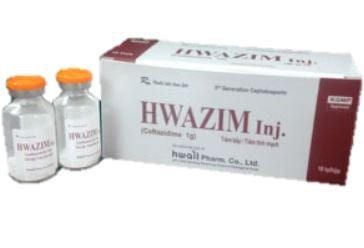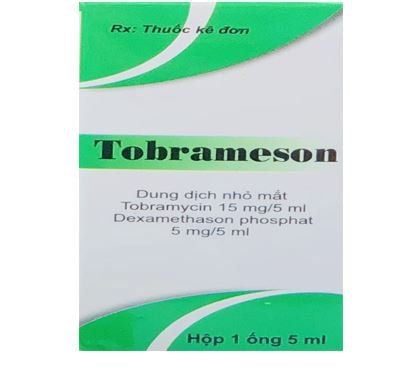This is an automatically translated article.
Ditazidim has the main ingredient is Ceftazidime, belongs to the 3rd generation Cephalosporin antibiotic group. So what does Ditazidim do? How to use and dosage?
1. What are the effects of Ditazidime?
Ditazidim medicine has the main ingredient Ceftazidime in powder form for injection. Ditazidim is indicated in the treatment of the following infections:
Lower respiratory tract infections. Skin infection. Urinary tract infections . Bone and joint infections. Gynecological infections. Abdominal infection. Central nervous system infection.
2. How to take Ditazidime
For adults, the usual dose is 1g every 8 hours or 2g every 12 hours, by intravenous infusion or deep intramuscular injection.
Pediatric dosage as prescribed by your doctor or recommended below:
Newborns (0-4 weeks): 30 mg/kg IV every 12 hours. Children from 1 month to 12 years: 30-50 mg/kg IV up to 6g/day every 8 hours. For the elderly: The usual dose should not exceed 3g/day.
How to use:
Ditazidim is given by intravenous infusion or deep intramuscular injection, usually into the lateral part of the thigh or the upper quadrant of the buttocks.
How to make Ditazidime solution for infusion:
Solution for intramuscular injection: Mix 1g of Ceftazidime powder in 3ml of distilled water for injection, or 0.5% or 1% lidocaine hydrochloride solution. Solution for intravenous injection: Dilute 1g of Ceftazidime powder in 10ml of distilled water for injection, or 0.9% sodium chloride or 5% dextrose solution. Solution for infusion: Mix 1-2g of Ceftazidime powder in 100ml of solvent.
3. Ditazidime side effects
Some local side effects when injecting drugs such as swelling at the injection site, hypersensitivity, itching, rash, diarrhea, nausea, vomiting, abdominal pain.
4. Contraindications of Ditazidime
Ditazidime is contraindicated for use in all people who are hypersensitive to Ceftazidime or to any of the excipients, including other Cephalosporins. In particular, absolutely do not use Ditazidim for people with a history of anaphylaxis with penicillins.
5. Be careful when using Ditazidime
Ditazidime should be used with caution in patients with a history of hypersensitivity to Ceftazidime, Cephalosporins and Penicillins. Watch out for symptoms of pseudomembranous colitis. For patients with renal impairment: The total daily dose should be reduced in these patients. High concentrations of Ditazidime can cause convulsions, loss of balance, and neuromuscular excitability. Ceftazidime may decrease prothrombin activity in patients with renal, hepatic or malnourished patients. Ditazidime should be used with caution in patients with a history of gastrointestinal disease. Use in pregnancy: Cephalosporins are considered safe during pregnancy. However, there are no well-controlled studies in pregnant women, so this drug should only be used in this population only when clearly needed. Ceftazidime may be excreted in breast milk, so caution should be exercised when administering the drug to a nursing woman. The basic information about Ditazidim in the above article is for reference only. Because Ditazidim is a prescription drug, patients should not use it on their own, but need to contact a doctor or a qualified person directly to have a suitable prescription to ensure safety for health.













